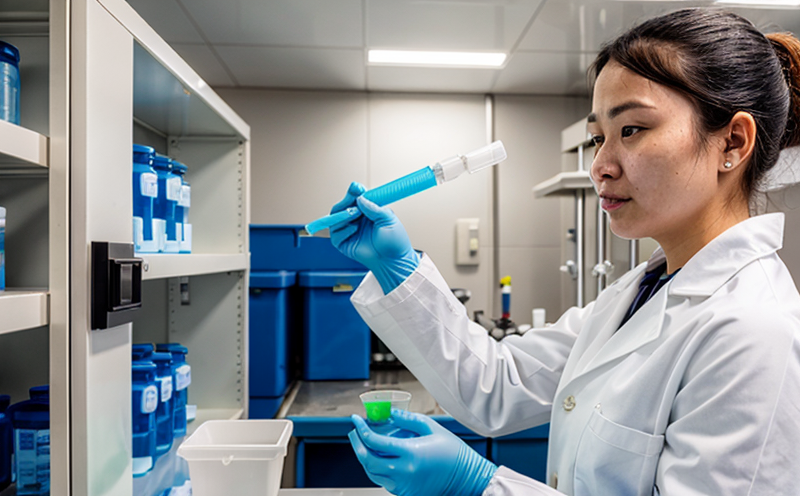USP Endospore Detection Testing
The United States Pharmacopeia (USP) Endospore Detection Test is a critical procedure designed to identify and quantify endospores in pharmaceutical products. This test ensures that the product is free from potentially harmful spores, thereby enhancing safety for patients. In this section, we will delve into the specifics of how this testing method works, its importance within the pharmaceutical industry, and why it holds such significance.
Endospores are dormant bacterial structures resistant to environmental stresses, including heat, radiation, and chemicals. They can survive in harsh conditions for extended periods, making them a potential hazard if introduced into sterile preparations or pharmaceutical products. The USP Endospore Detection Test is part of the broader quality assurance process that ensures the safety, efficacy, and purity of pharmaceuticals.
The test involves several steps: sample preparation, inoculation, incubation, staining, and microscopic examination. During this process, samples are subjected to conditions that would normally kill vegetative bacteria but not endospores. Subsequently, the presence or absence of endospores is determined by microscopic observation.
The USP provides detailed guidelines for this test, ensuring consistency across laboratories performing it. The standard specifies the use of defined media and incubation times to maximize detection sensitivity while minimizing false positives. Compliance with these standards ensures reliable results that can be trusted in regulatory submissions.
Understanding the context within which this test operates is crucial for its proper implementation. Pharmaceutical manufacturing processes must adhere to strict protocols to maintain product integrity, especially when dealing with sterile products like injectables or ophthalmic solutions. The USP Endospore Detection Test plays a vital role in upholding these standards by identifying any potential contamination early on.
Compliance with this test is mandated not only by the USP but also by various other regulatory bodies worldwide, including the European Medicines Agency (EMA) and Health Canada. This ensures that pharmaceutical products meet stringent safety requirements before they reach consumers.
Industry Applications
| Application Area | Test Description |
|---|---|
| Sterile Drug Products | Ensures that the product remains free from potentially harmful endospores throughout its shelf life. |
| Vaccine Manufacturing | Prevents contamination of vaccines, which could lead to serious adverse reactions in immunocompromised individuals. |
| Sterile Injectable Preparations | Maintains the sterility and purity of injectable drugs, reducing the risk of post-injection infections or allergic reactions. |
| Ophthalmic Solutions | Guarantees that eye drops remain free from endospores to prevent ocular infections. |
Why Choose This Test
- Enhanced Patient Safety: Eliminates the risk of endospore-related contamination, which could lead to severe health issues.
- Regulatory Compliance: Ensures adherence to USP standards and other global regulatory requirements.
- Quality Assurance: Provides a robust means of quality control that supports the overall integrity of pharmaceutical products.
- Consistency: Standardized procedures ensure consistent results across different laboratories.
- Early Detection: Identifies potential contamination early in the manufacturing process, allowing for corrective actions to be taken promptly.
- Client Confidence: Demonstrates a commitment to excellence and reliability that builds trust with clients and stakeholders.
Competitive Advantage and Market Impact
Implementing the USP Endospore Detection Test offers several competitive advantages in the pharmaceutical industry. By ensuring product safety, companies can avoid costly recalls due to contamination issues. This not only protects brand reputation but also reduces financial losses associated with such events.
Compliance with this test enhances a company’s credibility and trustworthiness among regulatory bodies and consumers alike. It sets a benchmark for quality that competitors find challenging to match, thereby securing a competitive edge in the market. Furthermore, by maintaining high standards of safety and efficacy, pharmaceutical companies can attract more investors and partners, strengthening their position in the industry.
The demand for safe and reliable pharmaceutical products continues to grow, driven by increasing awareness about product quality and patient safety. Companies that excel at ensuring these aspects through rigorous testing like USP Endospore Detection are well-positioned to meet this growing demand successfully.





